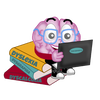Enhancing Learning for Children with Neurodiversities Through Creativity and ArtContributor: Tilda Moore  Image via Pexel There is a growing recognition that every child benefits from being exposed to and learning about the arts, and children with learning differences, such as dyslexia, dyscalculia, or dysgraphia, are no exception. In addition to teaching valuable skills, such as eye-hand coordination and fine motor abilities, art can boost creativity and provide a means for self-expression. If you have considered using art as a teaching vehicle for your child, here are some ideas to get you started. Provide Exposure
The first step in encouraging children to embrace art is to expose them to quality works. For example, bring your child to a classical music concert or spend an afternoon at a nearby art museum. If you are nervous about attending an evening performance or worried that your child will be bored at an art gallery, there are a growing number of programs aimed at introducing and engaging young patrons to the arts. Many orchestras present special concerts geared toward children that can capture your young one's imagination and ignite a passion for the performing arts. Similarly, many museums offer programming to attract the younger crowd and provide ways for them to participate:
Designate a Space Your child will need both space and art materials to paint, draw, or craft. If you have a spare room or an available spot in your home, a designated art space can encourage your little one to get creative. Having all the supplies in one place makes things easier and encourages children to be spontaneous. It also conveys that you take art seriously, which should provide extra motivation to your budding artist. As a bonus, an art studio may increase the appeal and value of your home if you decide to put your house on the market. Take Advantage of Comic Books You may already know that comic books can help motivate reluctant readers by combining an exciting storyline with visually stimulating art. Parents should consider taking it one step further by encouraging their children to create their own comic book art. Once you provide simple supplies, such as white paper, pencils, ballpoint pens, and markers, encourage your children to let their imagination lead the way. Their storytelling skills and artistic expression may just surprise you! Consider Acting Classes Acting provides children with the opportunity to get personally immersed in a theme. When children act something out, they acquire a sense of ownership and relate on a much deeper level than if they simply learn about it from a book. Moreover, acting teaches skills that can be particularly beneficial for a child with learning differences:
Provide Music Lessons Studies have consistently shown that playing a musical instrument improves cognitive ability, enhances sensory functions, teaches time management, and even increases blood flow to the brain. When choosing an instrument, consider your child's age, ability level, physical strengths, and most importantly, what he or she is excited by and drawn to. Parents of children with learning differences should not overlook the benefits of integrating art into their children's lives. Whether your child is dealing with ADHD, autism, or dyslexia, art provides a vehicle for self-expression and learning that can't be matched by more traditional teaching methods. For more learning resources and private online tutoring services, see what Lexia Learners offers.
0 Comments
Your comment will be posted after it is approved.
Leave a Reply. |
LEXIA LEARNERS LOUNGE
AuthorJess Arce is a homeschool mom of four, a tutor for children & adults who struggle with Dyslexia & Dysgraphia and an all around entrepreneur. She is passionate about helping others understand dyslexia. |
